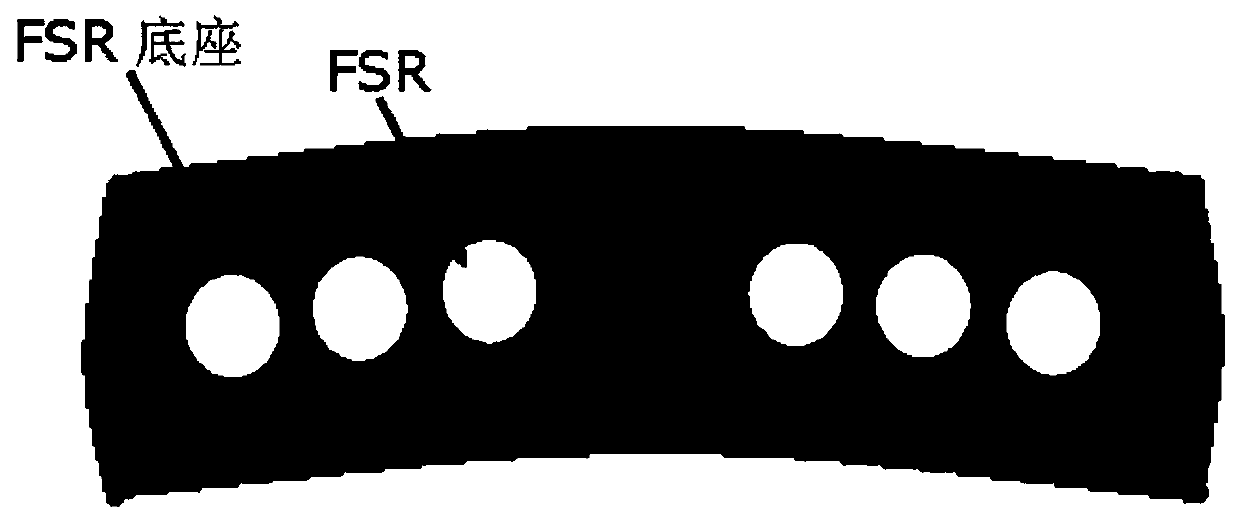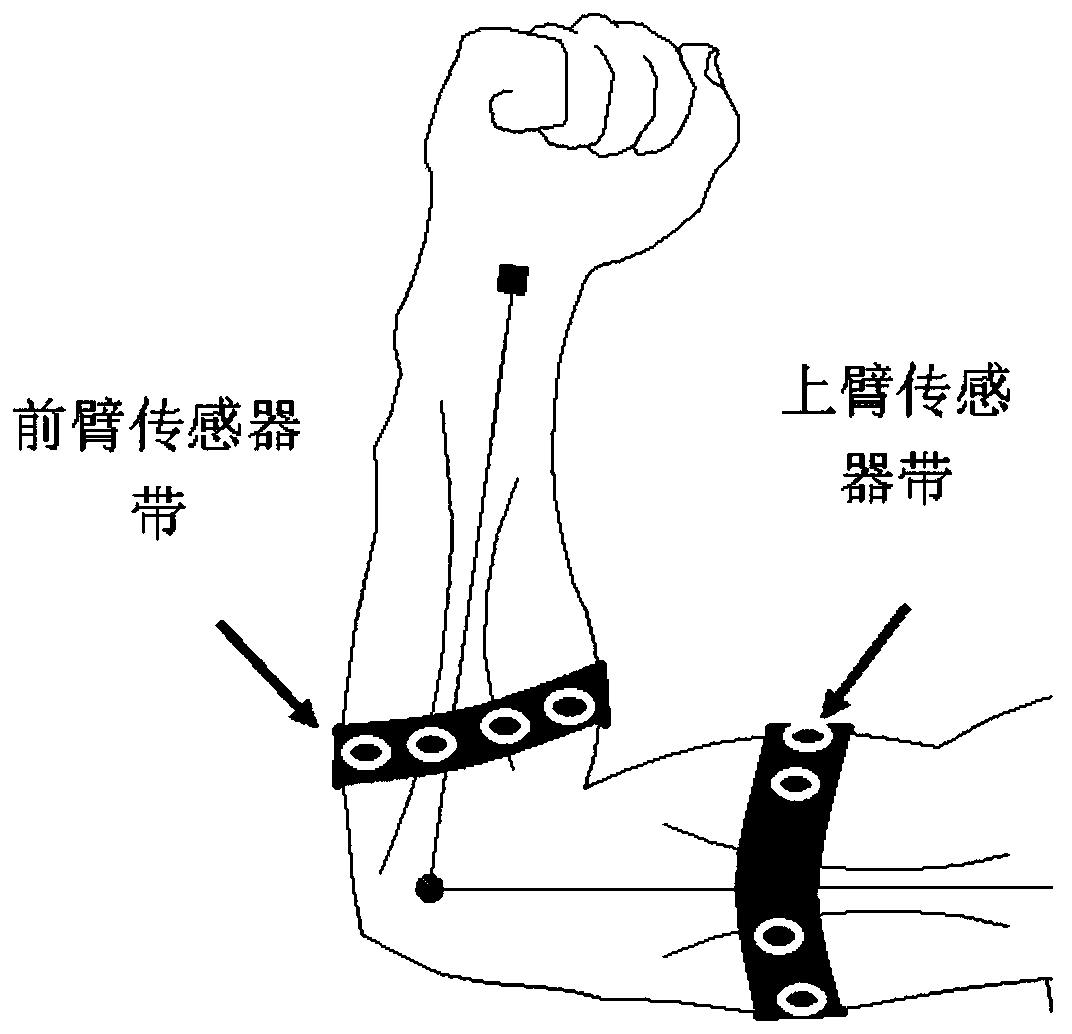A human intention detection system for motion assistance
A human, intentional technology for the detection of dexterous arm movement and physical effort, motion assistance, control of exoskeleton motion assist devices or robotic devices
- Summary
- Abstract
- Description
- Claims
- Application Information
AI Technical Summary
Problems solved by technology
Method used
Image
Examples
Embodiment Construction
[0058] The proposed HID system for detecting human intent consists of the following modules:
[0059] 1) Sensor belt
[0060] 2) Electronic devices
[0061] 3) Machine Learning Algorithms
[0062] 1) Sensor strips are used to read muscle activity during different movements and muscle forces or efforts. Each sensor strip consists of a flexible strip in which an array of N (5≤N≤10) force-sensitive resistors (FSR, such as interconnection 402 ) is embedded, such as figure 1 and figure 2 shown. FSR is able to measure force changes due to muscle contraction and relaxation. They are placed in such an order that the activity of different muscle groups can be detected. Choose a flexible strap for comfort and a secure position on the arm. A small base is placed between the strap and the FSR to ensure that the entire surface of the FSR is in contact with the skin.
[0063] The sensor strip can be mounted on the arm in different ways:
[0064] a) one on the upper arm and one on ...
PUM
 Login to View More
Login to View More Abstract
Description
Claims
Application Information
 Login to View More
Login to View More - R&D Engineer
- R&D Manager
- IP Professional
- Industry Leading Data Capabilities
- Powerful AI technology
- Patent DNA Extraction
Browse by: Latest US Patents, China's latest patents, Technical Efficacy Thesaurus, Application Domain, Technology Topic, Popular Technical Reports.
© 2024 PatSnap. All rights reserved.Legal|Privacy policy|Modern Slavery Act Transparency Statement|Sitemap|About US| Contact US: help@patsnap.com










